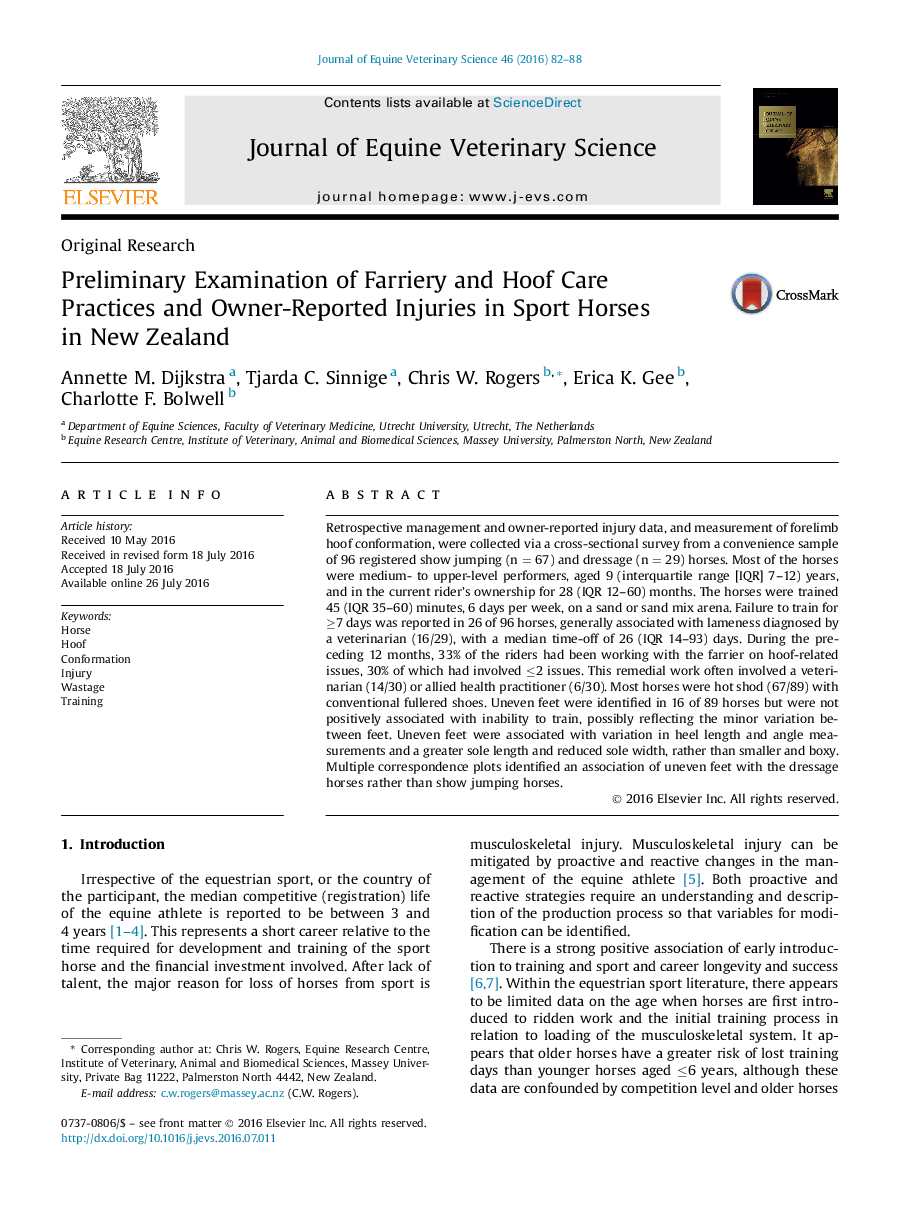| Article ID | Journal | Published Year | Pages | File Type |
|---|---|---|---|---|
| 8483444 | Journal of Equine Veterinary Science | 2016 | 7 Pages |
Abstract
Retrospective management and owner-reported injury data, and measurement of forelimb hoof conformation, were collected via a cross-sectional survey from a convenience sample of 96 registered show jumping (n = 67) and dressage (n = 29) horses. Most of the horses were medium- to upper-level performers, aged 9 (interquartile range [IQR] 7-12) years, and in the current rider's ownership for 28 (IQR 12-60) months. The horses were trained 45 (IQR 35-60) minutes, 6 days per week, on a sand or sand mix arena. Failure to train for â¥7 days was reported in 26 of 96 horses, generally associated with lameness diagnosed by a veterinarian (16/29), with a median time-off of 26 (IQR 14-93) days. During the preceding 12 months, 33% of the riders had been working with the farrier on hoof-related issues, 30% of which had involved â¤2 issues. This remedial work often involved a veterinarian (14/30) or allied health practitioner (6/30). Most horses were hot shod (67/89) with conventional fullered shoes. Uneven feet were identified in 16 of 89 horses but were not positively associated with inability to train, possibly reflecting the minor variation between feet. Uneven feet were associated with variation in heel length and angle measurements and a greater sole length and reduced sole width, rather than smaller and boxy. Multiple correspondence plots identified an association of uneven feet with the dressage horses rather than show jumping horses.
Related Topics
Life Sciences
Agricultural and Biological Sciences
Animal Science and Zoology
Authors
Annette M. Dijkstra, Tjarda C. Sinnige, Chris W. Rogers, Erica K. Gee, Charlotte F. Bolwell,
